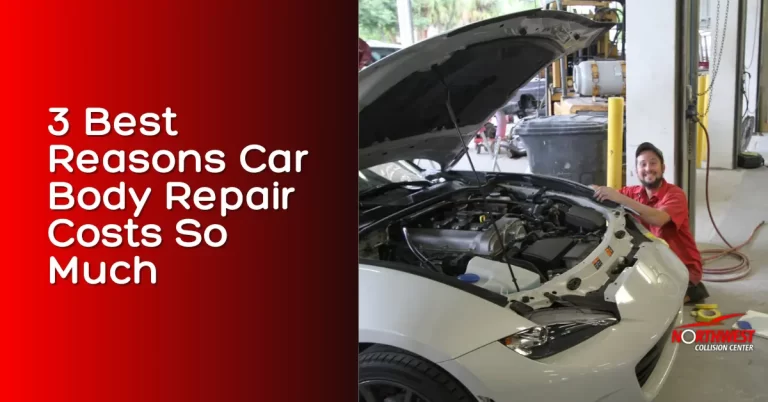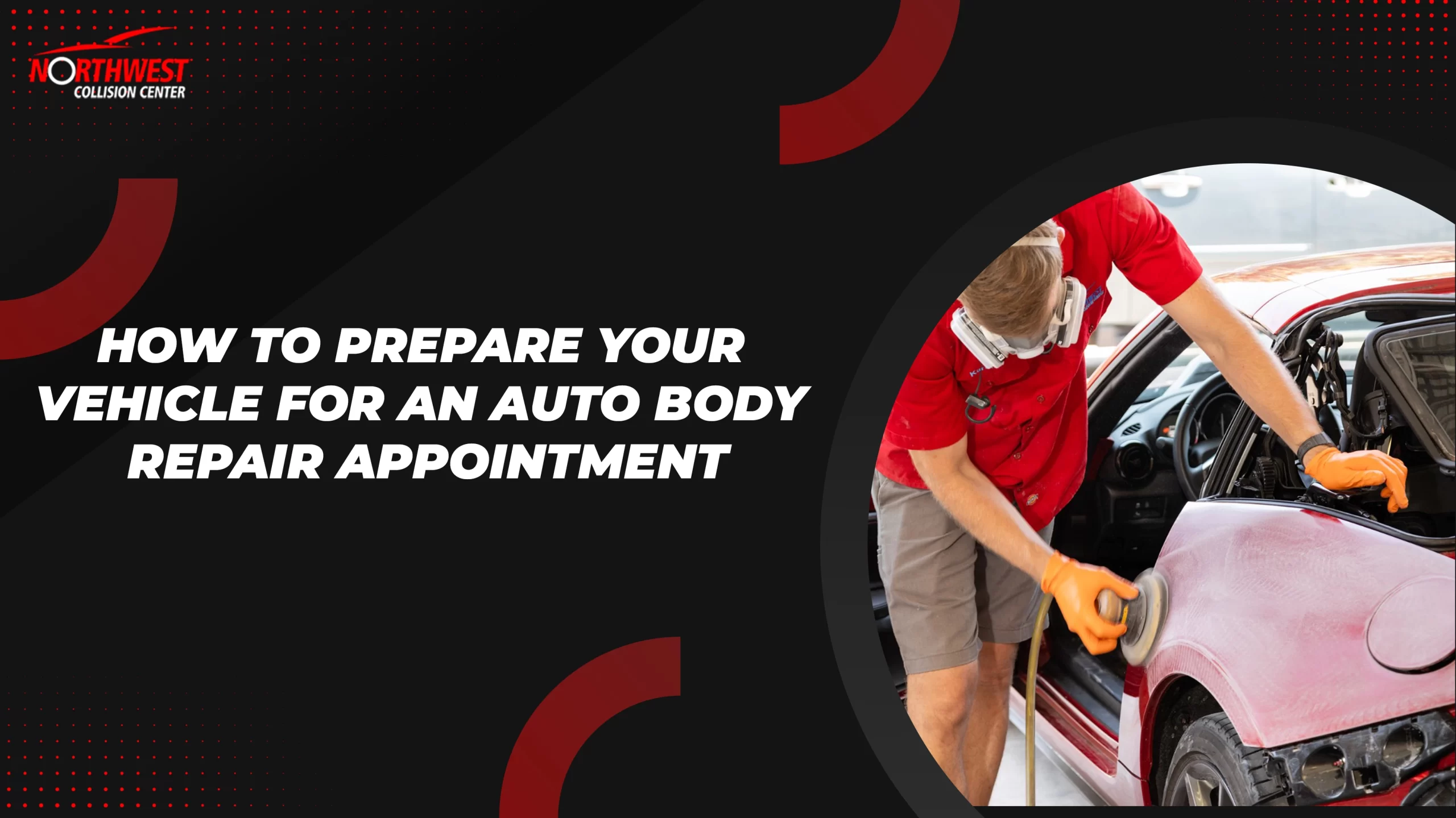Car body repairs cost so much due to several crucial elements. To begin with, skilled labor rates reflect the extensive training and certifications (I-CAR, ASE) technicians undergo, especially for advanced skills like paint blending and frame straightening. In addition, specialized equipment is vital, including state-of-the-art machinery and precision diagnostic tools, which require substantial investment and regular updates. Lastly, quality materials such as OEM parts and multi-stage specialty coatings guarantee durability and a seamless finish, driving up costs. Understanding these components provides a clearer picture of why repairs aren’t cheap and if you learn more, you’ll grasp the thorough nature of these costs.

Key Takeaways
- Skilled technicians with extensive training and certifications command higher labor rates due to their advanced expertise.
- Specialized equipment required for modern repairs involves significant investment and ongoing maintenance costs.
- High-quality OEM parts and specialty coatings ensure durability and precision but come at a premium price.
- Advanced materials like high-strength steel, aluminum, and carbon fiber require specialized handling, increasing overall repair costs.
- Precision and expertise in high-quality repairs justify elevated labor expenses to ensure safety and a seamless finish.
Skilled Labor Rates
When evaluating car body repair costs, understanding the skilled labor rates is crucial, as they can greatly impact the overall expense. The labor involved in auto body repair isn’t just about hammering out dents or applying paint; it’s a specialized skill that demands precision and expertise. Technicians undergo extensive training to master techniques like paint blending, frame straightening, and panel alignment. This expertise is why body work is so expensive.
Skilled labor rates can vary depending on the region, but they generally reflect the technician’s experience and qualifications. Master technicians who hold certifications from organizations like I-CAR or ASE often command higher rates due to their advanced skill sets. Shops also invest in continuous education to keep up with evolving automotive technologies, which adds to labor costs.
Additionally, labor rates are influenced by the complexity of the repair job. For instance, modern vehicles often incorporate advanced materials such as high-strength steel and aluminum, requiring specialized knowledge for proper repair. Labor hours can add up quickly when dealing with intricate repairs and meticulous tasks like color matching. Understanding these factors helps clarify why body work is so expensive, emphasizing the value of skilled labor in achieving high-quality repairs.
Specialized Equipment
Utilizing specialized equipment is vital for modern car body repairs, as it guarantees precision and efficiency in handling advanced automotive materials and technologies. When you’re dealing with high-strength steel, aluminum, and carbon fiber components, generic tools just won’t cut it. Shops need to invest in state-of-the-art machinery like frame straightening machines, computerized paint matching systems, and MIG welders designed for specific metal types. This specialized gear isn’t cheap, often costing tens of thousands of dollars, contributing considerably to why body work is so expensive.
Furthermore, diagnostic equipment is fundamental for addressing modern vehicle electronics and safety systems. Advanced driver-assistance systems (ADAS) require precise calibration post-repair, necessitating tools like laser alignment systems and OEM-specific scanning tools. These aren’t just one-time purchases; they also require regular updates and maintenance, adding to the ongoing costs.
Additionally, specialized equipment demands skilled technicians who are trained to operate it. Training programs and certifications, such as I-CAR or ASE, are vital but costly. This combination of high-tech tools and expertly trained labor creates a perfect storm for elevated repair costs. So when you wonder why body work is so expensive, remember that it’s the price of precision and safety.
Quality Materials
Why do high-quality materials in car body repair push costs skyward? When it comes to restoring your vehicle, auto body shops emphasize using top-tier materials that guarantee durability, safety, and a seamless finish. These materials aren’t just pricey; they’re crucial to achieving that factory-new look and maintaining your car’s structural integrity.
Consider the following factors that contribute to the high cost of quality materials:
- OEM Parts: Original Equipment Manufacturer parts are specifically designed for your vehicle, guaranteeing perfect fit and function, but they come at a premium price.
- Specialty Coatings: Advanced paint systems, including multi-stage applications and UV-resistant finishes, are vital for a long-lasting, flawless appearance.
- High-Strength Steel and Aluminum: Modern vehicles often use lightweight yet strong materials to improve fuel efficiency and safety, but these materials require specialized handling and are costly.
- Composite Materials: Carbon fiber and other composites used in high-end vehicles are exceptionally expensive due to their manufacturing complexity and performance benefits.
- Corrosion-Resistant Treatments: These treatments protect your car from rust and wear, extending its lifespan but adding to the overall repair bill.
Conclusion
In summary, you’re paying top dollar for car body repairs due to the trifecta of skilled labor rates, specialized equipment, and quality materials. Think of it like getting a bespoke suit; precision and expertise cost. When your vehicle’s in the shop, it’s not just a mechanic working on it—it’s a highly trained artisan using cutting-edge tech, making sure your car looks mint condition. So, next time, remember: quality ain’t cheap, but it’s worth it.










